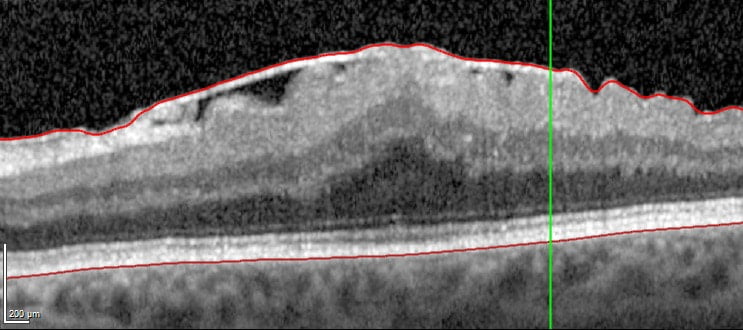An epiretinal membrane (ERM) is a thin layer of avascular fibrous tissue on inner surface of the retina. It usually occurs at the macula.
OCT scan showing an ERM on top of the retina, with thickening of the macular and distortion of the inner retinal surface.
Normal OCT.
Symptoms
Contraction of the membrane causes corrugations in the fovea that distort the patient’s vision, with straight lines appearing bent or bowed. It can also cause blurred vision, although often the visual acuity is less affected than expected based on symptoms. It can occur in isolation or in association with other eye disease such as diabetes, peripheral retinal breaks, posterior uveitis, and trauma.
Treatment
Treatment involves surgical removal with vitrectomy and membrane peel. This usually improves the distortion, but vision is seldom completely normal and the full benefit of surgery can take several months to manifest. The effect on visual acuity may be less marked.
Occasionally the membranes recur, and very rarely repeat surgery is indicated.
Referral guidance
Treatment is non-urgent, so please refer routinely.
Further information can be found in the patient information leaflet.

